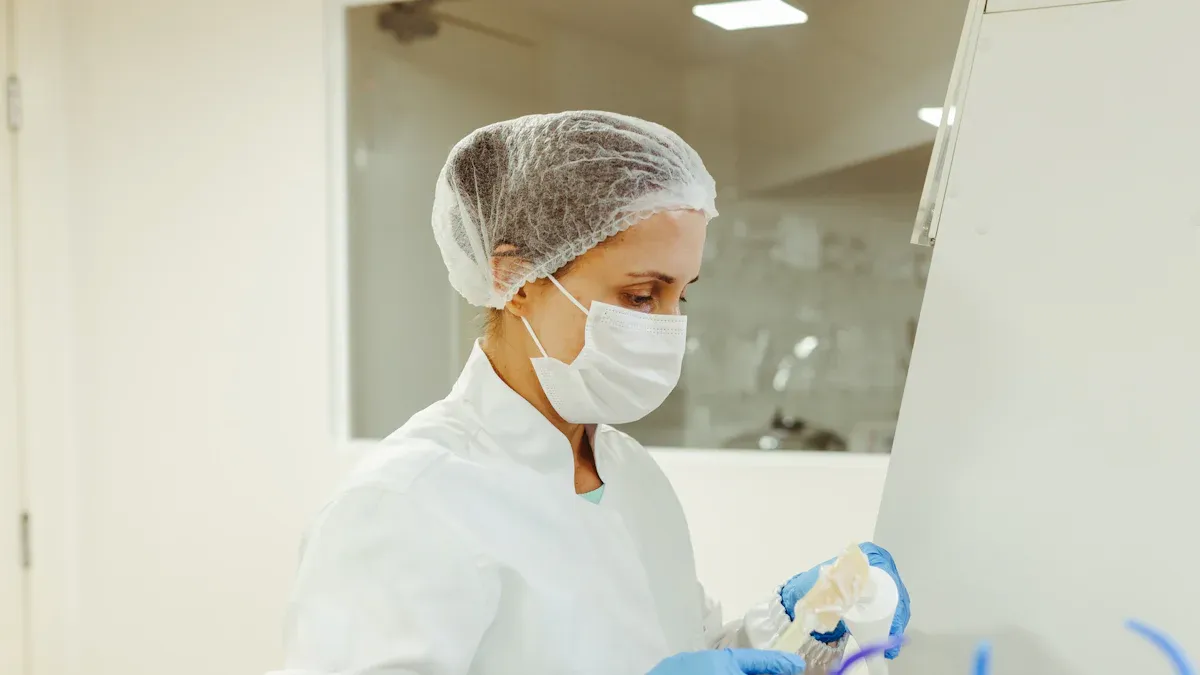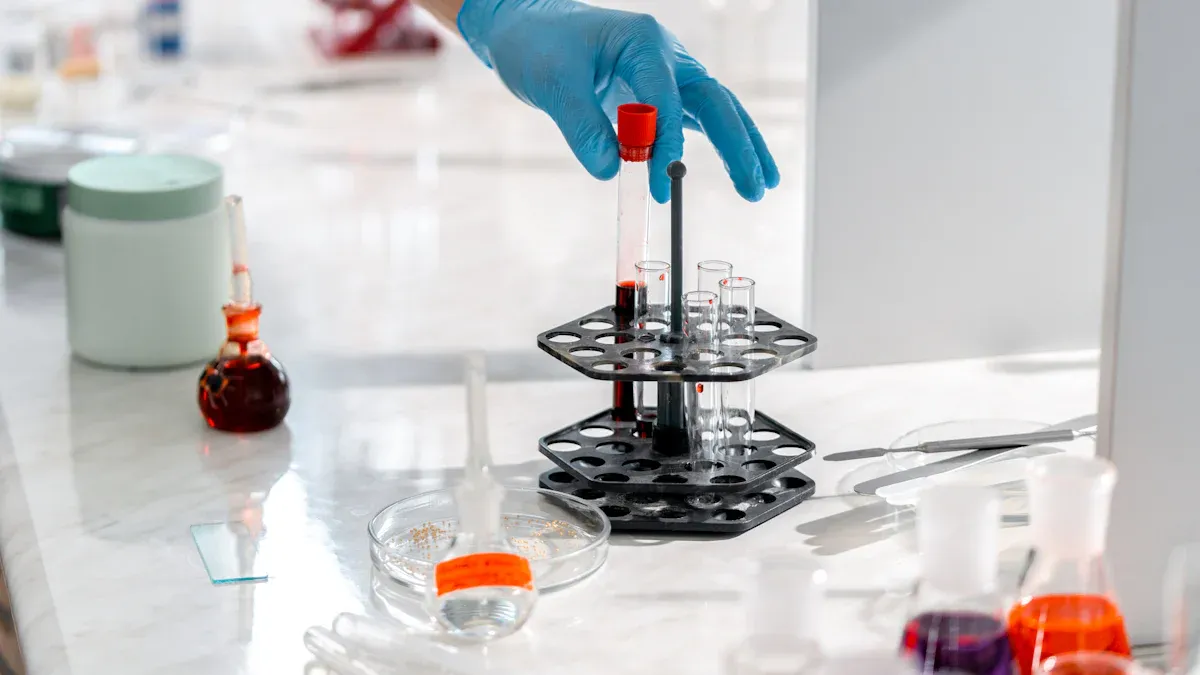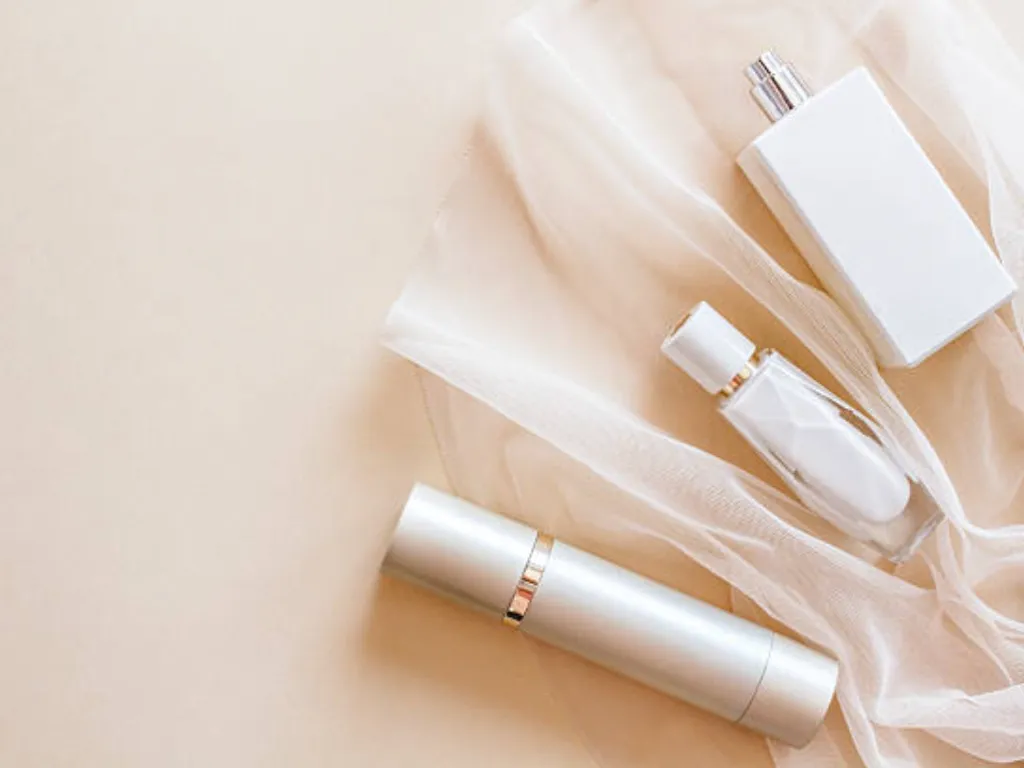
Stability testing ensures that your skincare products remain safe, فعال, and long-lasting. This process predicts shelf life and determines expiration dates, giving you confidence in the quality of your formulations. It also identifies changes in product performance or appearance, preventing issues that could harm consumer trust. Without stability testing, products may degrade prematurely, leading to health risks or reduced efficacy. By prioritizing this step, you protect your brand’s reputation and meet essential regulatory standards.
What is Stability Testing?

التعريف والغرض
اختبار الاستقرار is a scientific process that evaluates how a product’s quality changes over time under various environmental conditions. It ensures that skincare products remain safe, فعال, and visually appealing throughout their shelf life. This process also helps identify potential issues, such as ingredient degradation or packaging incompatibility, before products reach consumers.
Definition/Purpose | وصف |
|---|---|
Provides evidence on how the quality of a drug product varies with time under various environmental factors. | |
In-Use Stability Study | Establishes the period during which multi-dose products can be safely used after opening while complying with quality attributes. |
Regulatory References | Includes guidance from WHO, ANVISA, and other regulatory bodies on in-use stability testing. |
By conducting a stability study, you can determine the expiration date and storage conditions for your skincare line. This ensures that your products meet both consumer expectations and regulatory standards.
Types of Cosmetic Stability Testing
Cosmetic stability testing involves several methods to evaluate how products perform under different conditions. These tests assess physical, كيميائية, والاستقرار الميكروبيولوجي, ensuring that your formulations remain consistent and safe.
Conducting stability testing on cosmetic products makes good business sense to confirm the effectiveness of a product’s preservative system and maintain product quality attributes over time.
Here are some key attributes tested during cosmetic stability testing:
Organoleptic properties (appearance, لون, odor, نَسِيج).
Weight changes.
pH levels for aqueous products.
Viscosity for liquid and semi-liquid products.
Microbiological parameters, such as total microbial count and preservative efficacy.
Stability testing is essential in various scenarios:
Developing new products.
Reformulating existing products.
Switching to new packaging.
Modifying manufacturing processes.
These tests simulate real-world conditions, such as exposure to heat, ضوء, and humidity, to predict how your products will perform over time.
Regulatory Requirements for Skincare Products
Stability testing regulations vary by region, but they all aim to ensure product safety and quality. Regulatory bodies like the FDA, من, and ANVISA provide guidelines for conducting stability studies. These guidelines outline the necessary tests, الوثائق, and compliance standards for skincare products.
For over-the-counter (OTC) products, stability testing regulations are even stricter. OTC stability testing must demonstrate that the product remains effective and safe throughout its shelf life. This includes testing for active ingredient potency, microbial contamination, and packaging compatibility.
By adhering to these regulations, you can avoid legal issues and build trust with your customers. Proper documentation of your stability study also ensures that your products meet global standards, making it easier to expand into international markets.
Why is Stability Testing Important for Skincare Products?
Ensures Product Safety and Efficacy
Stability testing plays a vital role in ensuring the safety and efficacy of skincare products. By exposing products to different environmental conditions, such as temperature and humidity, you can identify how their quality changes over time. This process helps you detect potential issues like ingredient degradation or harmful substance formation. على سبيل المثال, stability studies have shown that poor product stability can lead to recalls, as seen in 2018 when 24,000 syringes of a drug were removed from the market due to out-of-specification results.
Through stability testing, you can also evaluate how long your product maintains its desired quality and potency. This ensures that your skincare products remain effective and safe for consumers throughout their lifecycle. Regulatory agencies require this data to approve new products, making stability testing an essential step in product development.
Determines Shelf Life and Expiration Dates
Determining the shelf life and expiration dates of your skincare products is another critical aspect of stability testing. By simulating real-world conditions, you can predict how long your products will stay fresh and effective. على سبيل المثال, accelerated stability testing can uncover significant instabilities, such as the formation of harmful substances, over time. This allows you to establish accurate expiration dates, ensuring that your products meet safety standards until the end of their shelf life.
Stability studies often span several years, covering the entire lifecycle of a product. This process ensures that your formulations remain consistent from manufacturing to expiration. By providing clear shelf-life information, you help consumers make informed decisions and maintain trust in your brand.
Protects Brand Reputation and Consumer Trust
Your brand’s reputation depends on the quality and reliability of your skincare products. Stability testing helps you deliver products that meet consumer expectations for safety, فعالية, and longevity. When customers trust your products, من المرجح أن يظلوا مخلصين لعلامتك التجارية.
Failing to conduct thorough stability testing can lead to product recalls, negative reviews, and loss of consumer trust. By prioritizing this step, you demonstrate your commitment to quality and safety. This not only protects your brand’s reputation but also ensures compliance with regulatory standards, allowing you to expand into new markets with confidence.
Key Components of Cosmetic Stability Testing

Environmental Factors (على سبيل المثال, temperature, humidity, ضوء)
Environmental factors play a significant role in the stability of skincare products. Changes in temperature, humidity, and light exposure can alter the physical and chemical properties of your formulations. على سبيل المثال, high temperatures accelerate chemical reactions, leading to faster oxidation of active ingredients. Humidity can cause products to clump, dissolve, or separate, while light exposure may degrade sensitive ingredients, reducing their efficacy.
Environmental Factor | Influence on Stability |
|---|---|
Temperature | Affects chemical degradation and microbial growth. |
Humidity | Can cause physical changes like dissolution or clumping. |
Light | Impacts the chemical stability of products. |
To mitigate these effects, you should store products in controlled environments and use protective packaging. على سبيل المثال, opaque containers can shield light-sensitive ingredients, while airtight packaging minimizes exposure to moisture and oxygen.
Packaging Compatibility Testing
Packaging compatibility testing ensures that your product and its container work harmoniously over time. Incompatible packaging can lead to chemical migration, where substances from the container leach into the product, affecting its stability. على سبيل المثال, certain plastics may react with active ingredients, accelerating oxidation or altering the product’s pH.
نوع الأدلة | وصف |
|---|---|
Chemical Migration | Tests assess chemical migration between the product and its packaging. |
Accelerated Aging Tests | Validates shelf life under simulated conditions. |
Temperature Effects | Demonstrates how heat impacts chemical reactions and product stability. |
By conducting these tests, you can select materials that preserve the integrity of your formulations. This step not only extends shelf life but also ensures that your skincare products remain safe and effective for consumers.
Microbial Stability and Preservation
Microbial stability is critical for maintaining the safety and effectiveness of your skincare products. Without proper preservation, products can become breeding grounds for harmful microorganisms. Preservative efficacy testing evaluates how well your formulation resists microbial contamination during storage and use.
Preservative Efficacy Test: Measures the ability of preservatives to prevent microbial growth.
ايزو 11930: Provides guidelines for testing preservative effectiveness using specific microbial strains.
USP 51: Ensures compliance with antimicrobial safety standards.
Re-Inoculation Protocol: Tests preservative performance after repeated contamination.
Mixed Culture Testing: Simulates real-world contamination scenarios.
These tests help you identify the best preservative systems for your formulations. على سبيل المثال, combining preservatives can create a synergistic effect, enhancing microbial protection. By prioritizing microbial stability, you reduce the risk of contamination and ensure your products remain safe throughout their shelf life.
Physical and Chemical Stability
Physical and chemical stability ensures that your skincare products maintain their intended appearance, نَسِيج, and effectiveness over time. These aspects are critical for delivering a consistent experience to your customers.
Physical Stability: Maintaining Appearance and Texture
Physical stability focuses on how your product’s physical properties hold up during storage and use. Changes in texture, لون, or separation can affect the product’s appeal and usability. على سبيل المثال:
Texture Changes: Creams may become grainy or separate into layers.
Color Alterations: Pigments can fade or shift due to light exposure.
Phase Separation: Oil and water-based products may split, reducing effectiveness.
To prevent these issues, you should test your formulations under different conditions. على سبيل المثال, centrifuge testing can simulate long-term storage by accelerating separation processes. This helps you identify and fix potential problems early.
Chemical Stability: Preserving Active Ingredients
Chemical stability ensures that your product’s active ingredients remain effective throughout its shelf life. Factors like oxidation, pH changes, and ingredient interactions can degrade your formulation. Common examples include:
Oxidation: Vitamin C loses potency when exposed to air.
pH Shifts: Acidic or alkaline environments can destabilize sensitive ingredients.
Ingredient Reactions: Certain compounds may interact, forming unwanted byproducts.
نصيحة: Use antioxidants and stabilizers to protect active ingredients from degradation. Airtight packaging can also minimize exposure to oxygen and moisture.
Testing for Stability
You can conduct tests like pH monitoring, viscosity checks, and accelerated aging studies to evaluate physical and chemical stability. These tests help you refine your formulations and ensure your products remain safe and effective for consumers.
By prioritizing physical and chemical stability, you enhance product quality and build trust with your customers.
How to Conduct Stability Testing for Your Skincare Line
خطوة 1: Develop a Stability Testing Plan
Creating a stability testing plan is the first step in ensuring your skincare products meet safety and quality standards. This plan outlines the testing methods, environmental conditions, and timelines required to evaluate product stability effectively. Industry protocols guide this process, helping you design a comprehensive approach.
Accelerated Stability Testing: Simulates aging by exposing products to extreme conditions like high temperatures, freeze-thaw cycles, and humidity variations.
اختبار الاستقرار في الوقت الحقيقي: Monitors product performance under normal conditions over months or years to determine accurate shelf life.
Efficacy Testing: Validates product claims through in-vitro and in-vivo methods, ensuring your formulations deliver promised benefits.
Long-term Stability Monitoring: Tracks product changes under various environmental conditions over extended periods.
Use of Stability Chambers: Provides controlled environments to simulate different conditions accurately.
Documentation and Analysis: Keeps detailed records to identify trends and potential issues.
Adjusting Formulations: Collaborates with chemists to refine formulations based on findings.
نصيحة: A well-structured stability testing plan not only ensures compliance with regulatory standards but also helps you identify and resolve potential issues early, saving time and resources.
خطوة 2: Select Testing Conditions and Timeframes
Choosing the right testing conditions and timeframes is crucial for evaluating product stability. Environmental factors like temperature, humidity, and light exposure can significantly impact the physical and chemical properties of your formulations. Testing under both accelerated and real-time conditions provides a complete picture of how your products perform over time.
Temperature Variations: Test products at high and low temperatures to simulate seasonal changes.
Humidity Levels: Evaluate how moisture affects product texture and stability.
Light Exposure: Assess the impact of UV and visible light on sensitive ingredients.
Freeze-Thaw Cycles: Determine how repeated freezing and thawing affect product consistency.
Testing intervals should align with your product’s expected shelf life. على سبيل المثال, accelerated testing may last several weeks, while real-time studies can span months or years. Stability chambers are essential for maintaining consistent conditions during these tests.
ملحوظة: Selecting appropriate conditions ensures that your testing results accurately reflect real-world scenarios, helping you establish reliable shelf-life information.
خطوة 3: Monitor and Record Product Changes
Monitoring and recording product changes during stability testing is essential for identifying trends and potential issues. Advanced techniques allow you to analyze physical, كيميائية, and microbial stability with precision.
Mass Spectrometry (MS): Identifies degradation products and quantifies trace impurities.
Ultraviolet-Visible Spectroscopy (UV-Vis): Tracks molecular changes and measures oxidation-sensitive compounds.
Infrared Spectroscopy (IR): Detects structural modifications and identifies degradation products.
Nuclear Magnetic Resonance Spectroscopy (NMR): Provides detailed insights into molecular structure and monitors changes over time.
These methods help you understand how environmental factors affect your formulations. على سبيل المثال, UV-Vis spectroscopy can reveal the degradation of light-sensitive ingredients, while mass spectrometry detects impurities that may compromise product safety.
Statistical Approach | وصف |
|---|---|
Predicts degradation under long-term storage conditions using data from accelerated studies. | |
Regression Analysis | Analyzes trends in stability data to estimate shelf life based on observed degradation rates. |
Trend Analysis | Identifies deviations in stability data to inform necessary adjustments in formulations. |
“Clear regulatory guidelines are the bedrock of pharmaceutical trust. They safeguard public health by ensuring that drugs are analyzed thoroughly before reaching consumers.”
By documenting findings systematically, you can refine your formulations and ensure compliance with regulatory standards. This step not only enhances product quality but also builds consumer trust in your brand.
خطوة 4: Analyze Results and Make Adjustments
Analyzing the results of your stability tests is a critical step in ensuring your skincare products meet quality standards. This process involves reviewing the data collected during testing to identify trends, inconsistencies, or potential issues. By interpreting these findings, you can make informed decisions to refine your formulations and improve product performance.
Steps to Analyze Results:
Review Stability Data: Examine the recorded changes in physical, كيميائية, and microbial properties. Look for patterns that indicate degradation or instability.
Compare Against Standards: Match your results with industry benchmarks and regulatory requirements. This ensures your products meet safety and efficacy standards.
Identify Problem Areas: Pinpoint specific issues, such as ingredient degradation, packaging incompatibility, or microbial contamination.
Consult Experts: Collaborate with chemists or quality assurance professionals to interpret complex data and recommend solutions.
نصيحة: Use software tools to organize and analyze your data efficiently. These tools can help you visualize trends and detect anomalies.
Making Adjustments:
Once you identify issues, take corrective actions to address them. على سبيل المثال:
Reformulate Ingredients: Replace unstable ingredients with more robust alternatives.
Optimize Packaging: Switch to materials that better protect your product from environmental factors.
Enhance Preservation Systems: Adjust preservative levels or add synergistic agents to improve microbial stability.
Testing the adjusted formulation under similar conditions ensures the changes resolve the identified issues. This iterative process helps you create a product that performs consistently throughout its shelf life.
خطوة 5: Document Findings for Compliance
Proper documentation is essential for meeting regulatory requirements and maintaining transparency. Regulatory agencies often require detailed records of your stability testing process, including the methods used, results obtained, and actions taken.
Key Elements to Document:
Testing Protocols: Include details about the conditions, timeframes, and methods used during testing.
Results Summary: Provide a clear overview of the data collected, highlighting any significant findings.
Corrective Actions: Document the adjustments made to address identified issues, along with the rationale behind these changes.
Compliance Statements: Confirm that your products meet the relevant regulatory standards for safety and efficacy.
ملحوظة: Organize your documentation in a format that is easy to understand and audit. This will save time during regulatory reviews or inspections.
Benefits of Thorough Documentation:
Regulatory Approval: Well-documented findings demonstrate compliance with global standards, facilitating product approval in different markets.
Consumer Trust: Transparency in your testing process builds confidence in your brand.
Internal Reference: Detailed records serve as a valuable resource for future product development or troubleshooting.
By maintaining comprehensive and accurate documentation, you not only ensure compliance but also position your brand as a reliable and trustworthy player in the skincare industry.
Common Challenges and Tips for Success
Addressing Formulation Instabilities
Formulation instabilities can affect the performance and safety of your skincare products. You need to identify and address these issues early to ensure product quality. Environmental factors like temperature and light exposure often degrade active ingredients, reducing their effectiveness. على سبيل المثال, antioxidants such as ferulic acid can lose potency when exposed to air or light.
To improve stability, you can use strategies like nanoencapsulation and pH optimization. Nanoencapsulation protects sensitive ingredients by enclosing them in tiny particles, shielding them from environmental damage. Adjusting the pH of your formulation can also enhance ingredient stability. These methods not only preserve the efficacy of active compounds but also extend the shelf life of your products.
نصيحة: Collaborate with experienced chemists to test and refine your formulations. This ensures that your products remain stable under various conditions.
Choosing the Right Packaging Materials
Packaging plays a crucial role in maintaining product stability. Incompatible materials can react with your formulations, causing chemical migration or degradation. على سبيل المثال, certain plastics may interact with active ingredients, altering their effectiveness or safety.
Select packaging that complements your product’s needs. Airtight containers prevent exposure to air and moisture, while opaque materials protect light-sensitive ingredients. Glass and high-quality plastics are often ideal for skincare products due to their durability and compatibility.
نصيحة: Conduct packaging compatibility tests to ensure your chosen materials preserve the integrity of your formulations.
Managing Costs and Timelines
Balancing costs and timelines is one of the biggest challenges in stability testing. Testing under both accelerated and real-time conditions can be time-consuming and expensive. لكن, skipping this step risks product recalls and damage to your brand reputation.
To manage costs, prioritize essential tests based on your product’s formulation and target market. Partnering with a reliable testing lab can streamline the process and reduce expenses. Labs with advanced equipment and expertise can deliver accurate results quickly, helping you meet deadlines without compromising quality.
نصيحة: Plan your testing schedule early and allocate resources efficiently to avoid delays and unexpected costs.
Partnering with a Reliable Testing Lab (على سبيل المثال, أولي)
Choosing the right testing lab is essential for ensuring the success of your skincare line. A reliable partner can help you navigate the complexities of stability testing while saving you time and resources. أولي, with over a decade of experience in beauty and personal care manufacturing, offers comprehensive testing solutions tailored to your needs.
What Oully Offers
Oully provides a range of services to support your stability testing needs:
Custom Testing Plans: Tailored to your product’s unique formulation and target market.
State-of-the-Art Facilities: FDA-, iso-, and cGMP-certified, ensuring the highest quality standards.
Expert Guidance: Chemists and quality assurance professionals collaborate with you to interpret results and make improvements.
تحول سريع: Accelerated testing options help you meet tight deadlines without compromising accuracy.
خدمة | فائدة |
|---|---|
صياغة مخصصة | Ensures your product meets specific stability requirements. |
Packaging Compatibility | Tests materials to prevent chemical migration or degradation. |
Microbial Stability | Verifies preservative systems to maintain product safety. |
التعليمات
What is the difference between accelerated and real-time stability testing?
Accelerated testing simulates aging by exposing products to extreme conditions like heat or humidity. Real-time testing monitors products under normal conditions over months or years. Both methods help predict shelf life and ensure product quality.
How long does stability testing take?
Accelerated testing typically lasts 4 ل 12 أسابيع, while real-time testing can span 6 months to 2 سنين. The duration depends on your product’s formulation and the type of testing required.
Can stability testing help with regulatory compliance?
نعم, stability testing ensures your products meet safety and efficacy standards set by regulatory agencies like the FDA. Proper documentation of testing results also simplifies the approval process for global markets.
Do I need stability testing for every product?
نعم, every product requires stability testing. New formulations, packaging changes, or manufacturing adjustments can affect stability. Testing ensures consistent quality and safety for all products in your skincare line.
How can Oully assist with stability testing?
Oully offers custom testing plans, مرافق متقدمة, and expert guidance. FDA-, iso-, and cGMP-certified labs ensure accurate results. They also provide end-to-end manufacturing support to help you bring high-quality products to market.
















